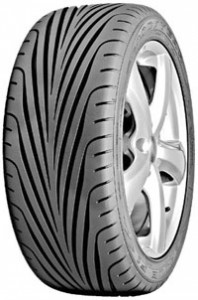 The Royal Air Force used to send me to Bardufoss in Arctic Norway, in winter. I learned there that, if you want to drive on snow, use winter tyres and, if you want to drive on ice, have studs in them.
The Royal Air Force used to send me to Bardufoss in Arctic Norway, in winter. I learned there that, if you want to drive on snow, use winter tyres and, if you want to drive on ice, have studs in them.
The point was hammered home when we went to Ørland near Trondheim, south of the Arctic Circle, for a month from mid-September. We drove there in British cars, using the ferry from Newcastle to Bergen, and of course they were fitted with summer tyres. We had been advised not to expect snow in mid October, when we were returning…
It transpired that Norwegians never expect serious snow in mid October, south of the Arctic Circle. They are, I was told, always caught out by it.
So we found ourselves stuck. Driving on snow-covered roads in Norway on summer tyres was and remains illegal. Our four-wheel-drive vehicles were hastily supplied with studs in their tyres and an expedient solution, involving a coastal ferry, was found for the cars.
Since I love driving, and particularly Alpine driving in the snow, I have used winter tyres on my car for about the last six years, typically driving to the Alps once a year. I tend to use Goodyear tyres: in summer Eagle F1 and in winter Eagle Ultra Grip. A clear difference can be seen:
 |
 |
While the summer tyres start with a tread depth of about 6mm, the winter tyres start at 8mm. The summer tyres maximise contact with the road and water displacement. The winter provide many more edges to contact the surface, across the direction of travel, including both a greater number of tread blocks and “sipes”: zig-zag incisions in each tread block which grasp the surface. Winter tyres are also made of a compound better suited to lower temperatures: at less than 7 Celcius, summer tyres start hardening, losing their grip.
The long and short of it is that, with winter tyres, a two-wheel-drive car will competently tackle roads covered completely with snow. You may find traction control or ESP activating but, with a gentle touch on the controls, there is no need for drama. Chains become reserved for only the worst conditions and steeper slopes. Minor roads can be fun:

So, how do Alpine countries cope with the snow?
- They accept the inevitability of heavy snow and plan for it. The costs of investing in the necessary preparation and equipment are justified by that very inevitability.
- They accept that the authorities cannot keep the roads clear while snow is falling, nor keep them perfectly clear, and so vehicles are appropriately equipped with winter tyres and, if necessary, snow chains. These are typically a legal requirement.
- There is in place a comprehensive snow clearance plan, which is used regularly: all the necessary participants are prepared and fully familiar with what they must do.
- People clear snow from their own property and minor roads outside.
- When the roads are gritted, they do mean grit: small stone chips. These sit in and on the last few mm of snow, providing extra grip.
We have a simple choice. Either we believe that significant snowfall is inevitable most years, or not.
If we believe heavy snow is to be a regular feature of British winters, we are going to have to think about spending taxpayers’ money on additional snowploughs, winter tyres for emergency vehicles, more and different grit and so on and so on. We might have to mandate winter or four-season tyres at considerable one-off cost to individuals. All that expense would have to be covered somehow.
If we believe heavy snow is not likely to be a fixture, then there is little to be done but cope with a few days of serious disruption here and there. Now is not the time to increase spending on winterisation if it is unnecessary.
It all depends on our projections for the climate. Hopefully, someone knows whether the British climate is cooling or warming. It”s not as if climate scientists haven’t been thinking about it…
good article steve
Thanks Brett – good to hear from you and it was a treat to discover Word Lens:
http://x1brettstuff.blogspot.com/2010/12/word-lens.html
I thought it was a wind up at first.
I drive a 1996 LR Defender. I don’t do many miles a year and it’s very cheap to run. Of course greenies give me a hard time most of the time – “what do you need 4 wheel drive for?” they ask. ‘Well’ I say ‘I do a lot of towing and I live in the boondocks’. ‘You’ll never need 4WD drive’ they say. Hmmm.
It is shod with BF Goodrich AT’s – a 50/50 tyre.
Oooo and haven’t I had fun recently. My tow strop is permanently attached to the tow hook and wound under and inside the rear door.
The greenies are very polite to me now.
Steve
Good article. But! There seems to be a mantra from all sides of politics that the question about “winterisation” (surely, that can’t be a word) is one that must be answered by the climate scientists.
Well, they will have an opinion, but only an opinion. Isn’t there another way of looking at this stuff? From the perspective of risk? Let’s tote up the cost of “winterising” the public sector. Let’s tote up the cost of “winterising” key aspects of the private sector (the spend on sufficient de-iceing rigs and training at Heathrow for example). Compare those costs to the economic impact of not having spent that money — the lost profits, the lost taxes and the lost opportunities associated with the last few days.
Is the cost/benefit 1/10? 2/10? 10/10?
Not acting, and hoping that science will say “we’re not sure”, seems a bit like living through a credit crunch and not splitting investment and retail banking…. oh… no… wait.